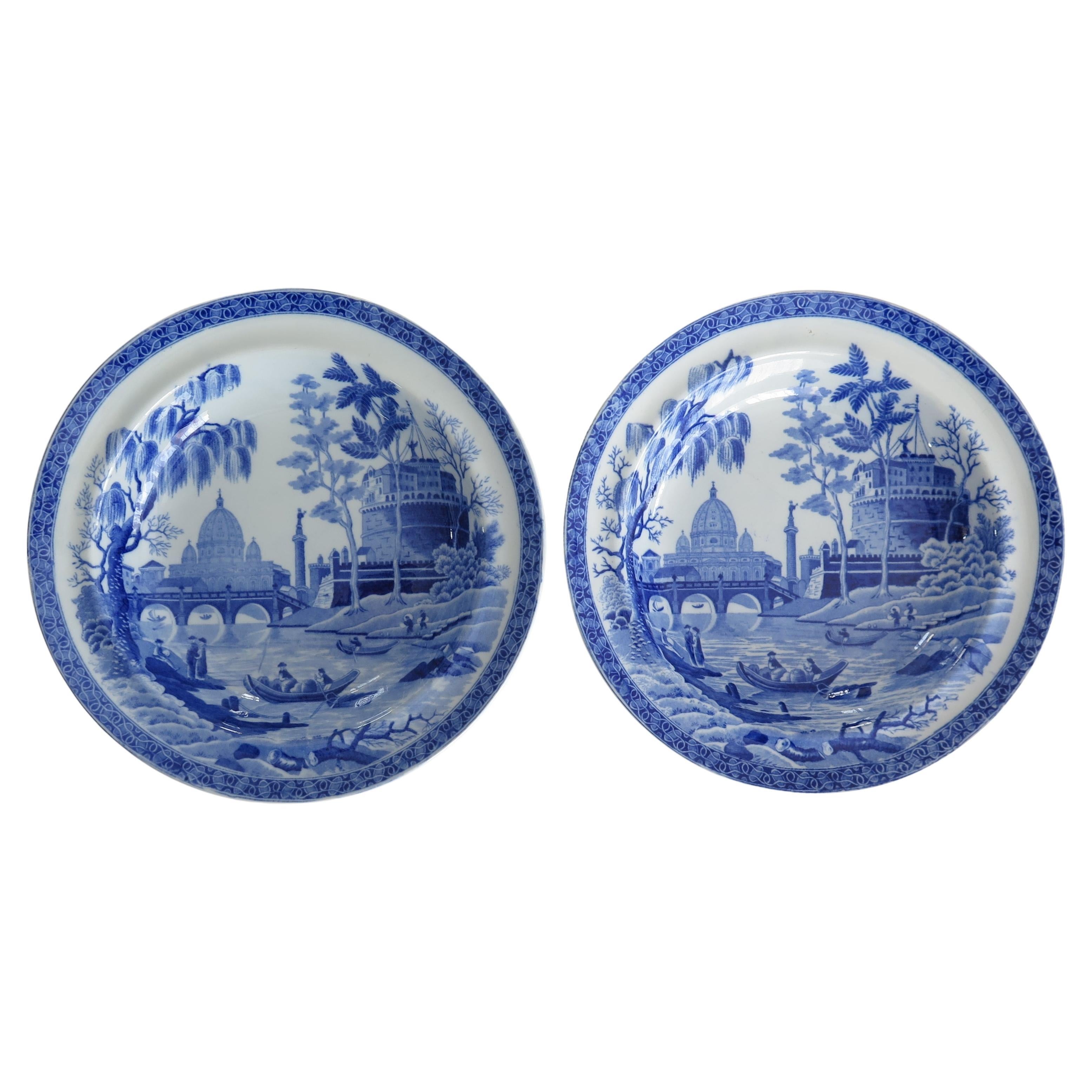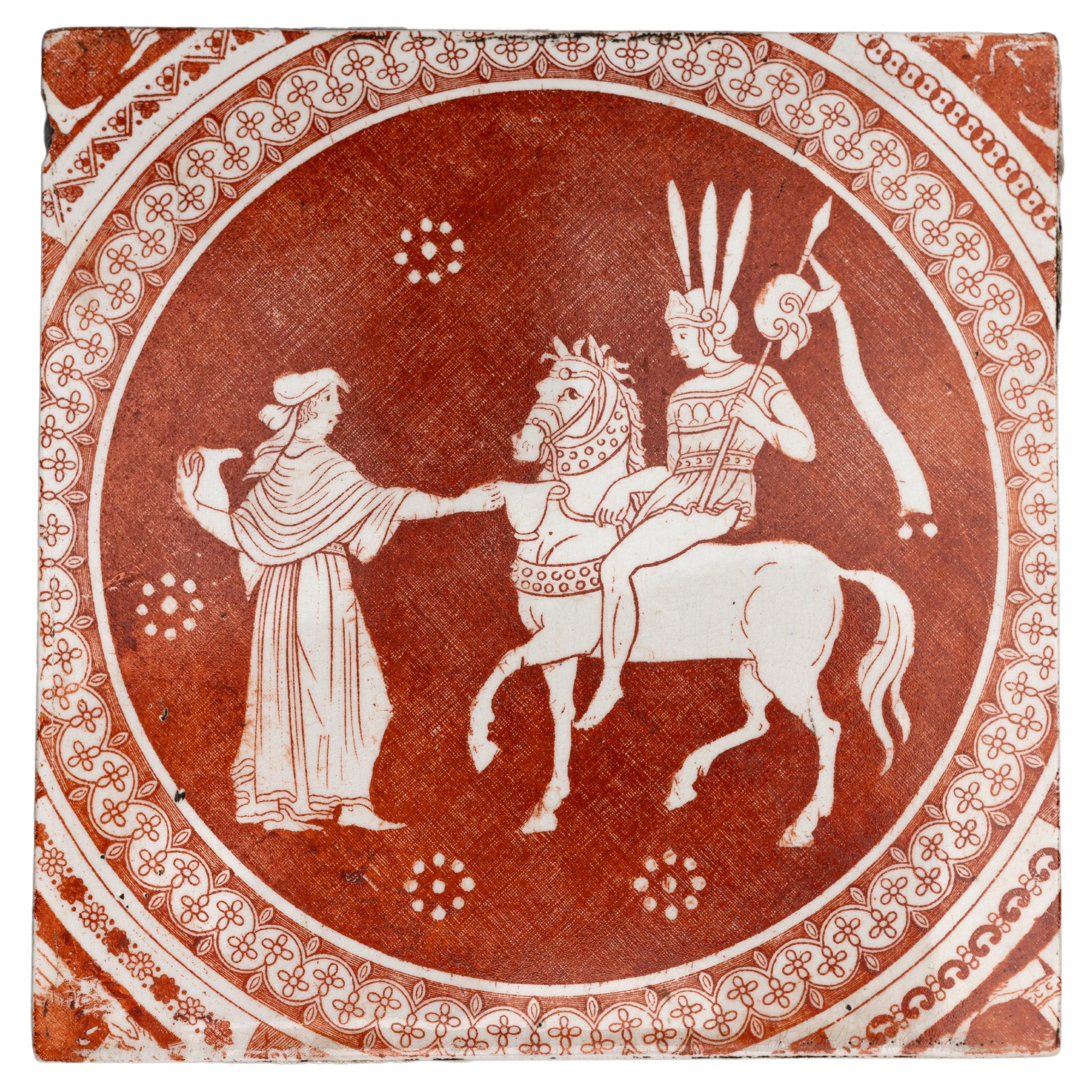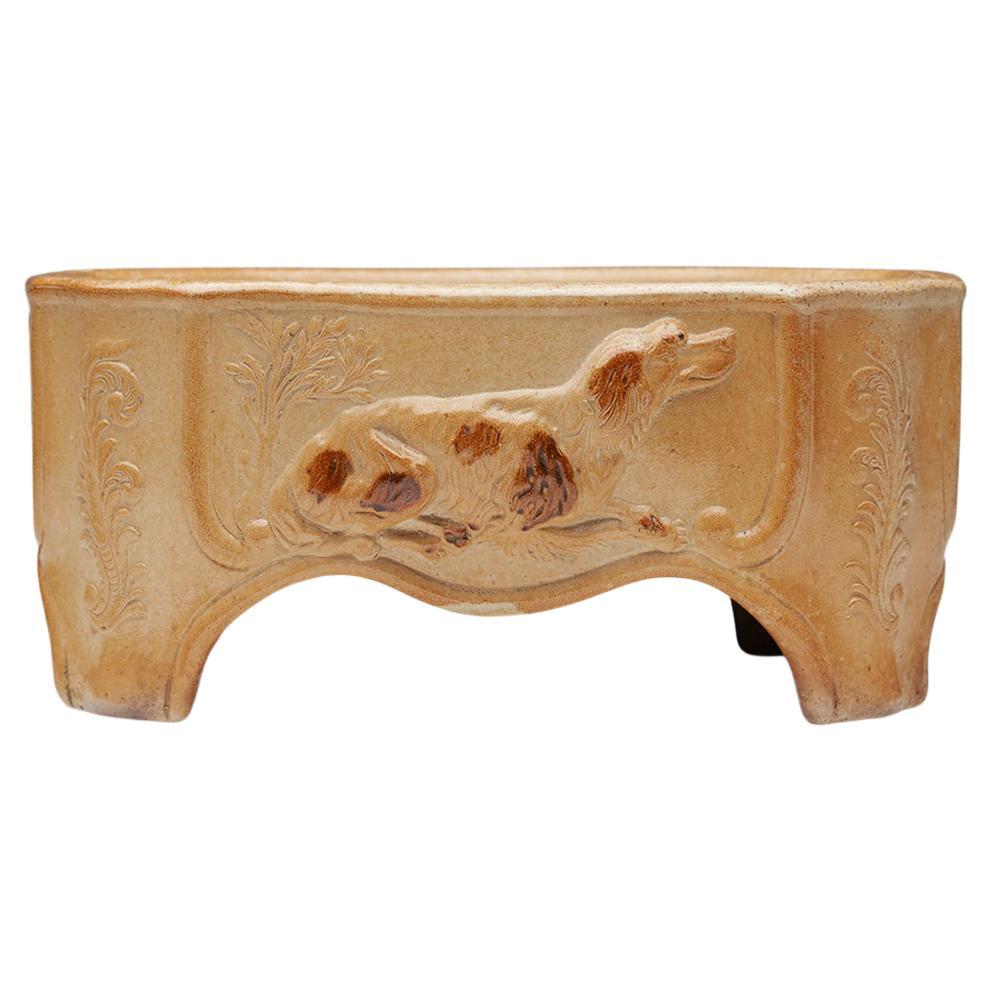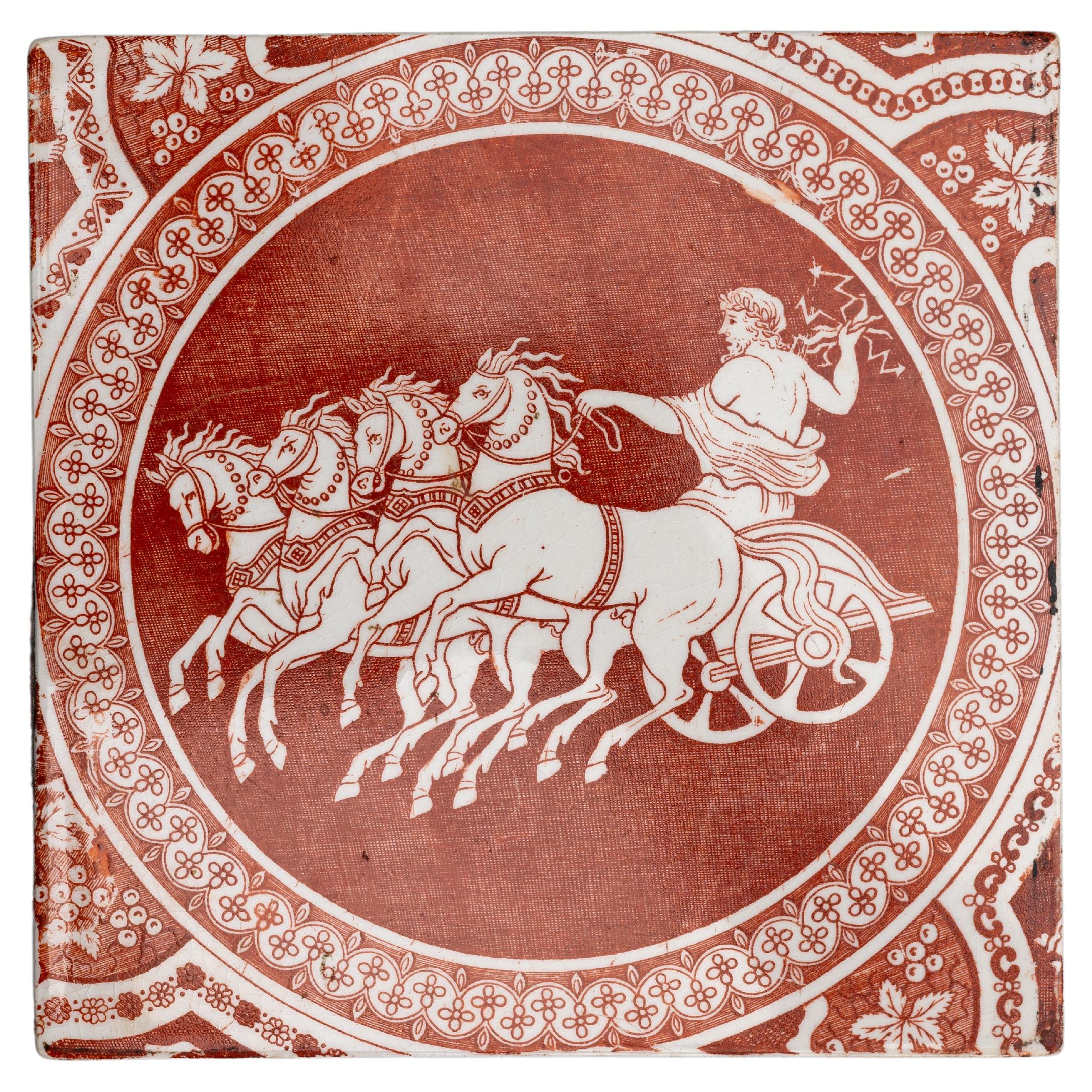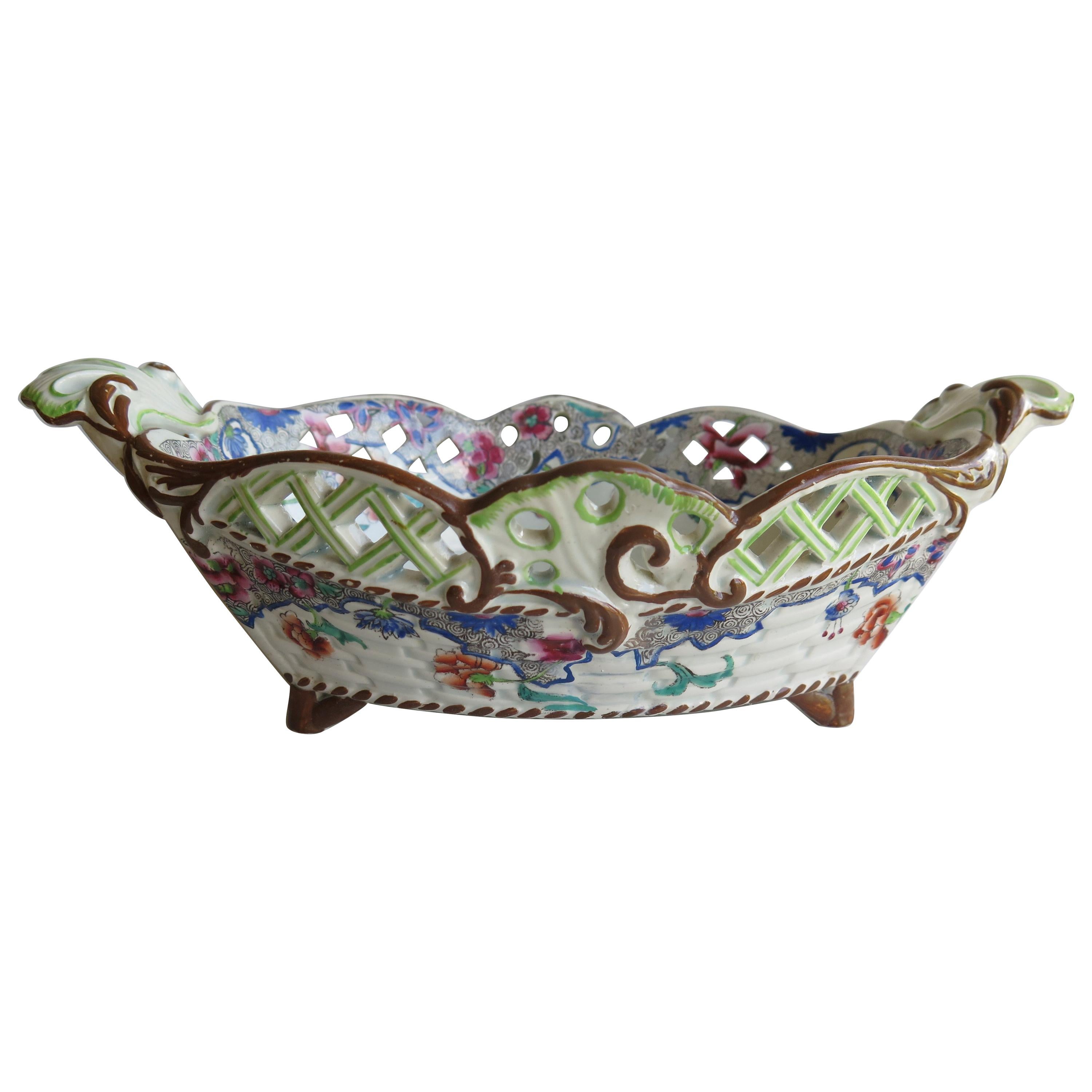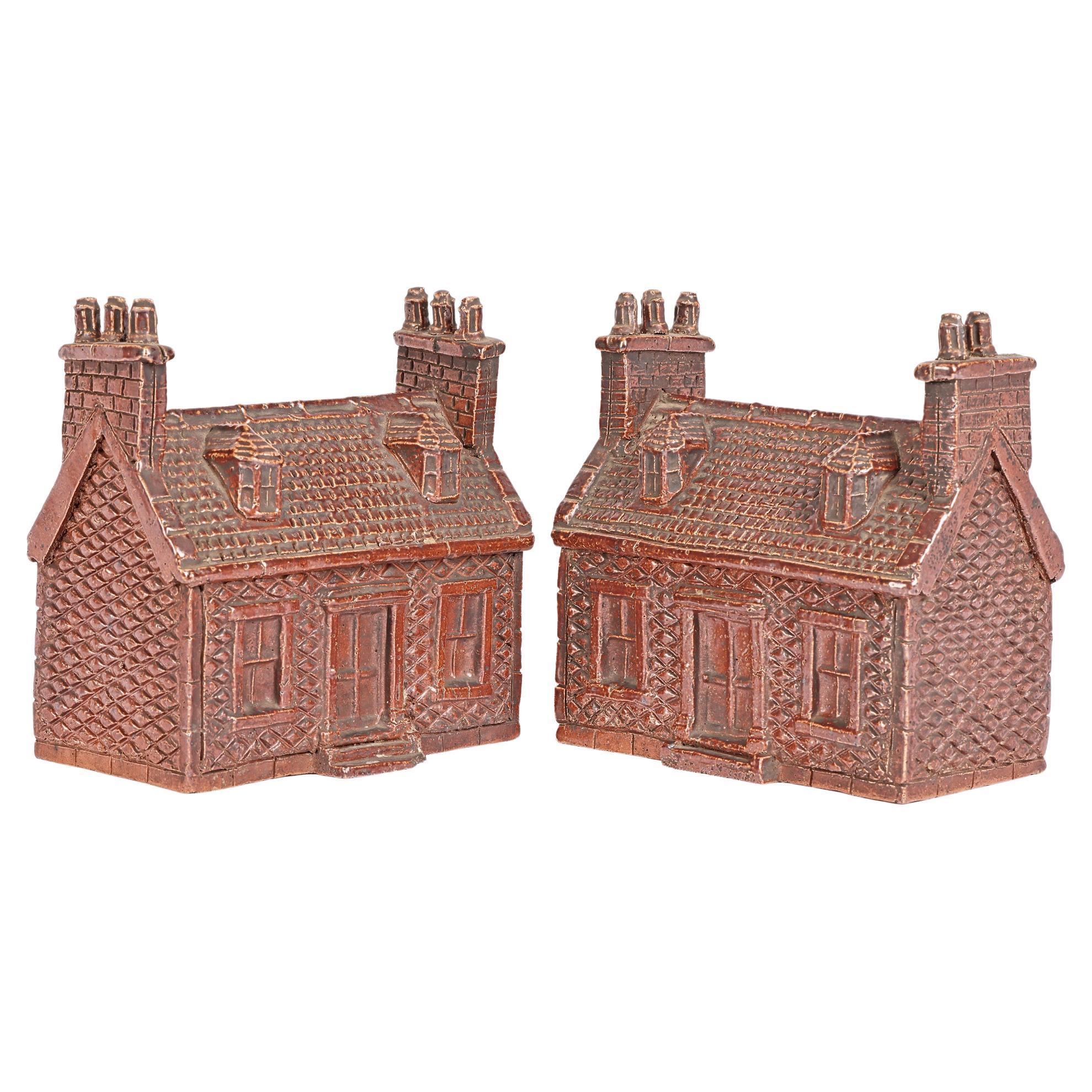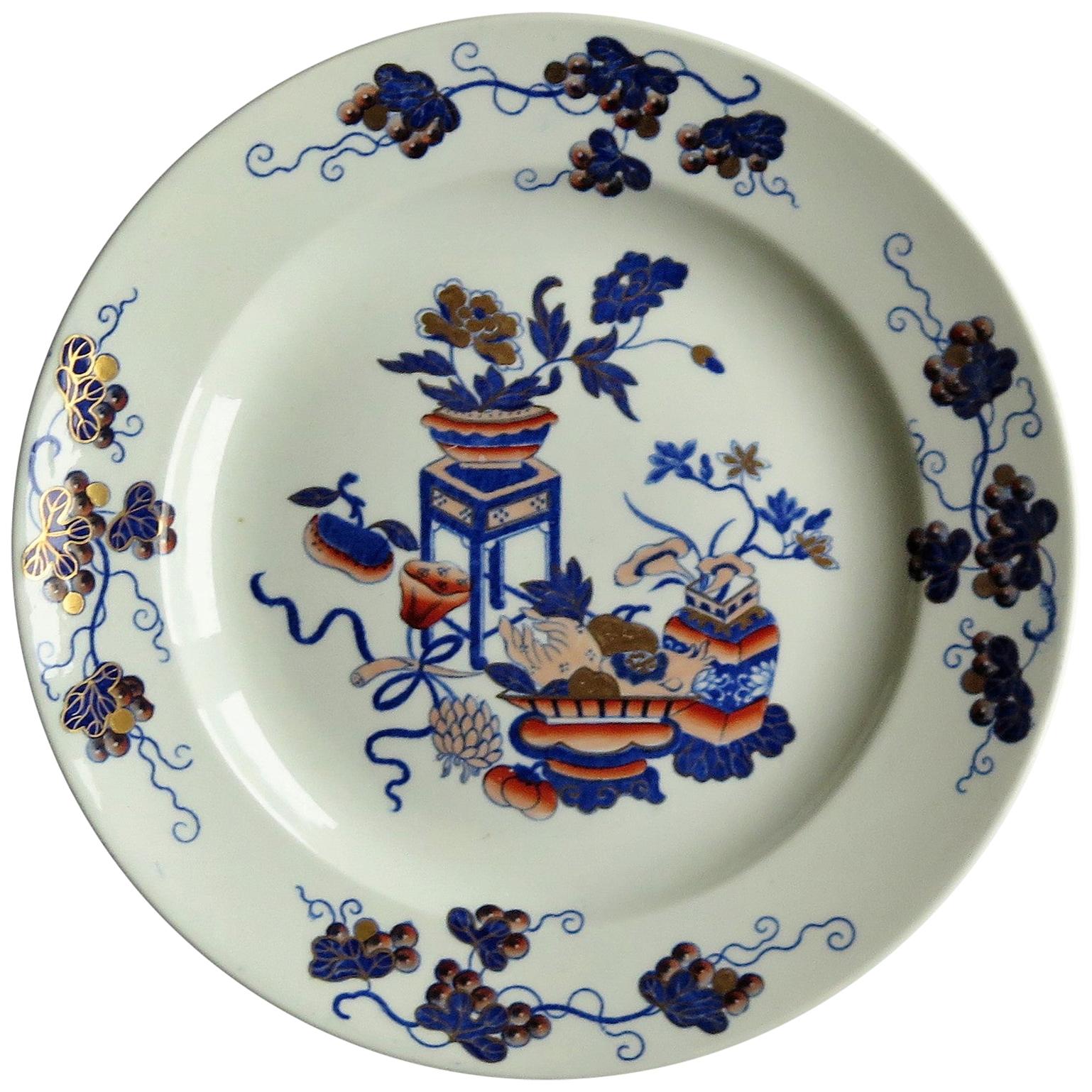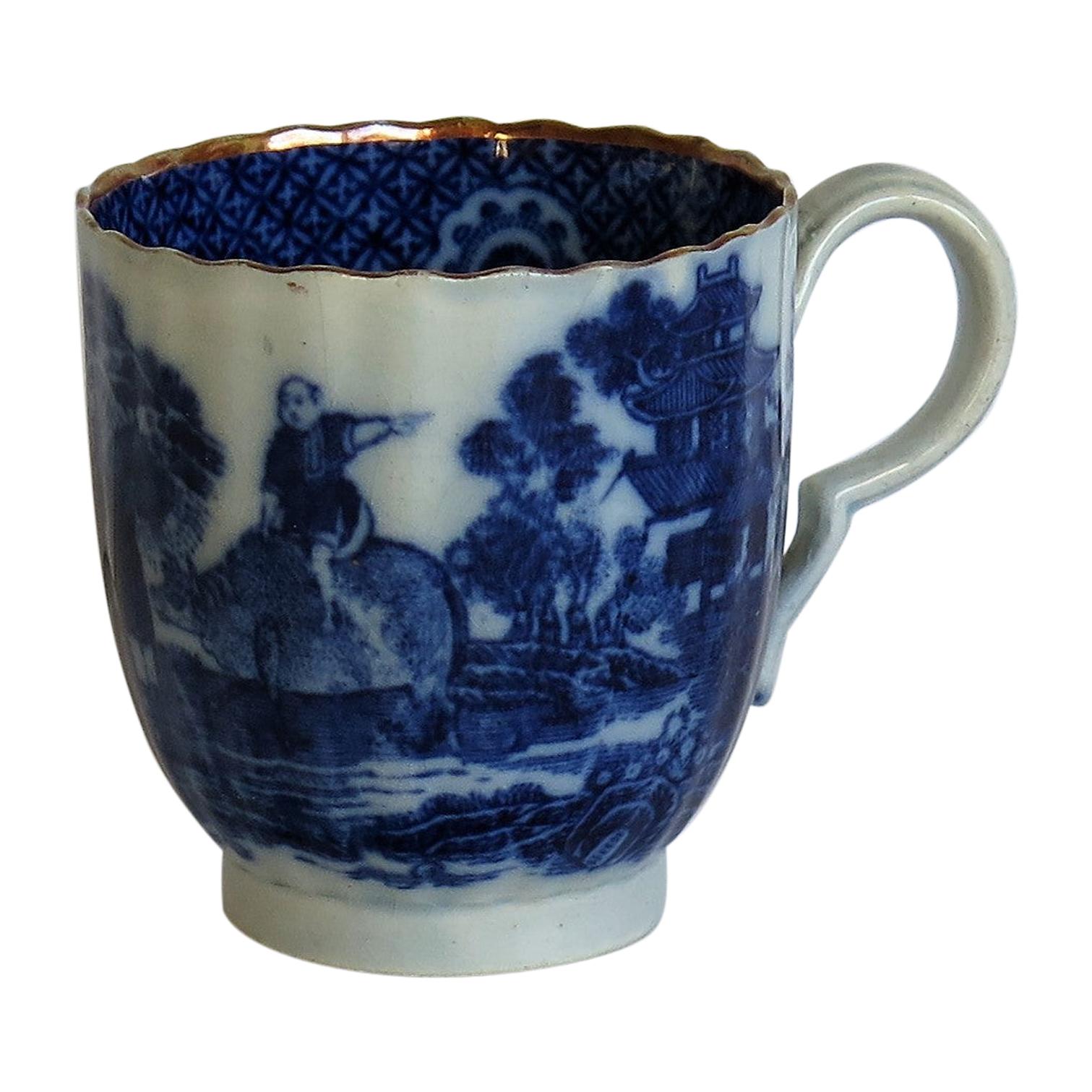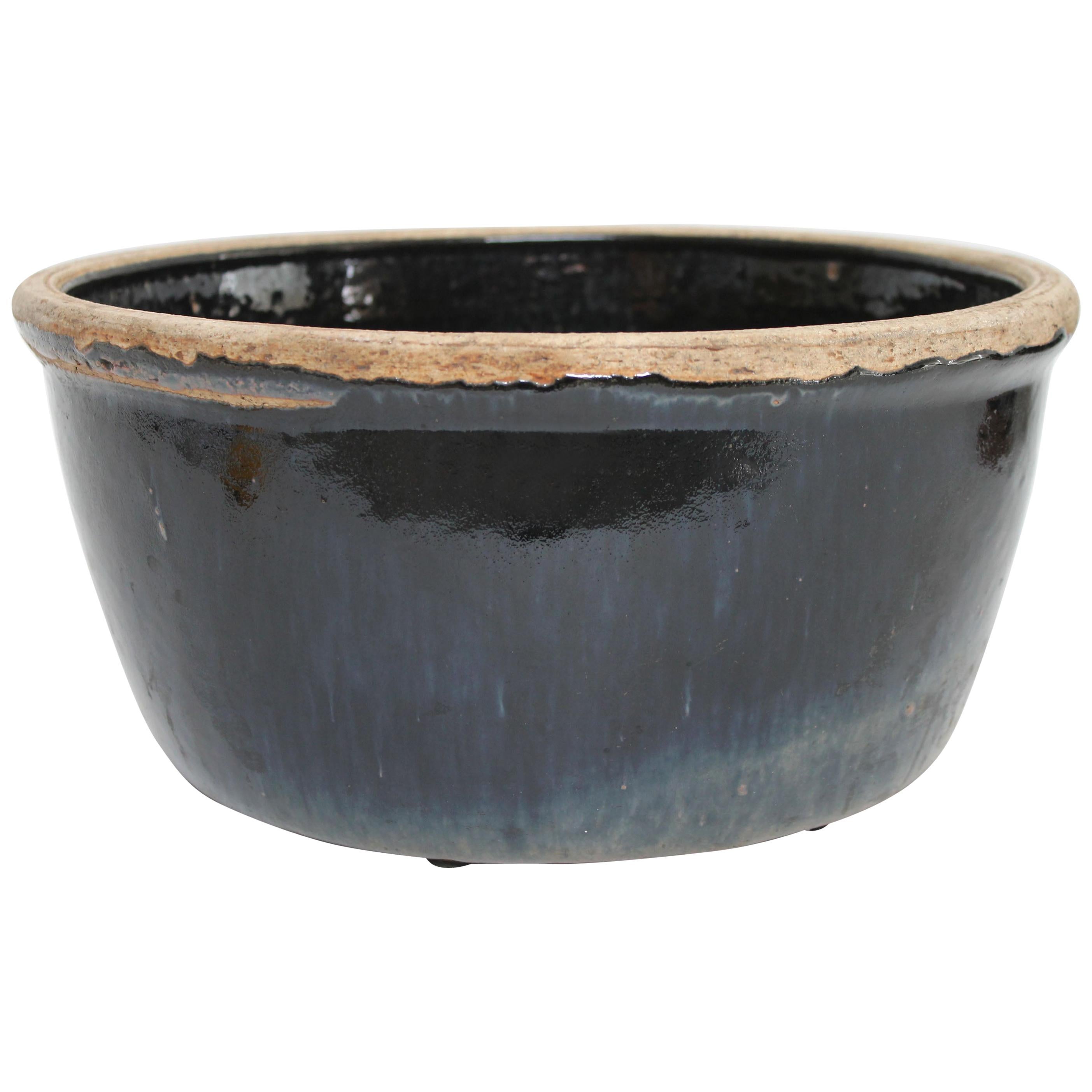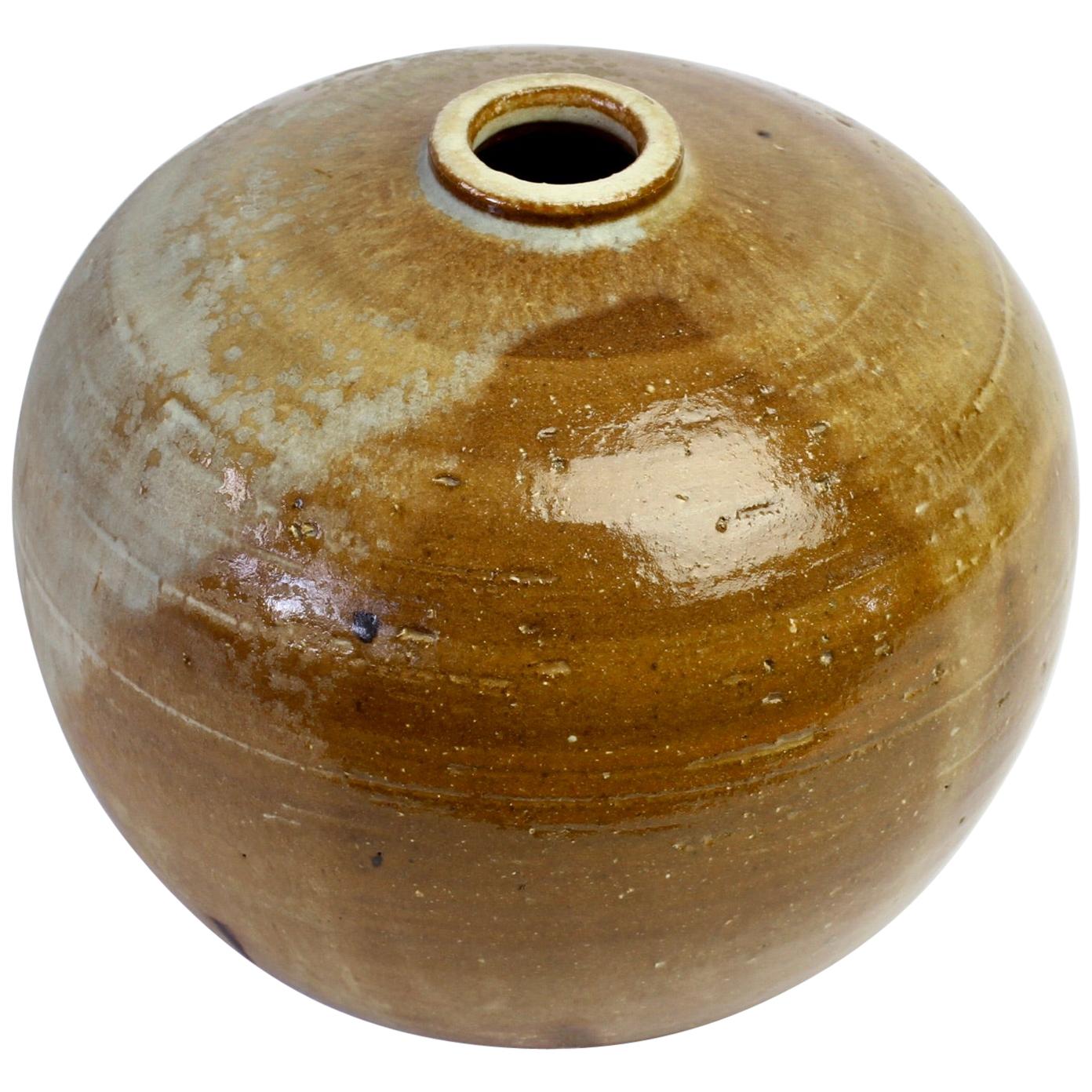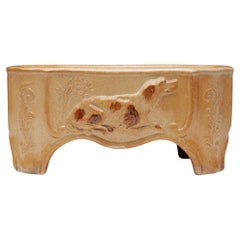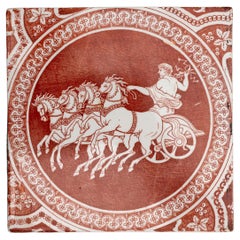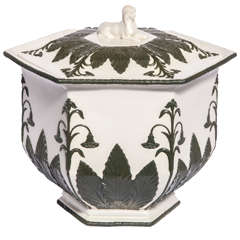
Rare Signed Spode Glazed Stoneware Covered Hexagonal Bowl
View Similar Items
1 of 10
Rare Signed Spode Glazed Stoneware Covered Hexagonal Bowl
About the Item
- Creator:Josiah Spode (Manufacturer)
- Dimensions:Height: 11 in (27.94 cm)Width: 12 in (30.48 cm)Depth: 12 in (30.48 cm)
- Materials and Techniques:
- Place of Origin:
- Period:
- Date of Manufacture:circa 1800
- Condition:
- Seller Location:New York, NY
- Reference Number:Seller: K691stDibs: 1410158554694
You May Also Like
- Early Spode Red Greek Pattern TileBy Spode, Josiah SpodeLocated in Fort Lauderdale, FLA Neoclassical red transferware tile made by Spode 1806-1810, with the ‘Refreshments for Phliasian Horseman’ pattern. Sir William Hamilton’s Collection of Etruscan, Greek and Roman antiquities, first published in 1766 by Pierre d’Hancarville, was a landmark publication in English design. It intended to disseminate the Antique style through its engravings of Attic pottery. The catalog’s faithful reproductions of Classical vases led British potteries, including Spode, to adapt or even copy the ancient art for modern life. These Spode Greek pattern tiles reflect the major influence of Hamilton’s catalog on English Neoclassicism. The central scene was taken directly from the catalog. This tile can be dated to a narrow window of production in the Spode factory, 1806-1810. During that time, Spode used a technique known as the “Pluck and Dust” method to print in red transfer designs onto creamware. Using this method, source prints were transferred overglaze using tissue imprinted with a very faint rendition of the design outlined in sticky oil. The decorator applied the tissue to the object then carefully “plucked” or pulled it away, leaving the sticky oil design behind. Then, a finely-ground enamel color was “dusted” onto the surface, sticking to any areas that had the oil. A final firing at a low temperature in the enamel kiln made the pattern permanent. The Pluck and Dust technique improved upon bat-printing and enabled larger designers to be transferred. It was short-lived, however, as under-glaze transfer printing soon took over as the preferred method for producing transferwares. Dimensions: 5 in. x 5 in. x 1/4 in. Condition: Excellent. Slight chip to the upper left corner measuring approximately 0.9 cm. in length. Provenance: The Collection of Nancy and Andrew Ramage Jonathan Horne...Category
Antique Early 19th Century English Neoclassical Pottery
MaterialsEarthenware, Creamware
- Brampton Early Victorian Salt Glazed Stoneware Dog BowlLocated in Bishop's Stortford, HertfordshireA rare antique English, Brampton salt glazed dog bowl molded with setter like dogs and leaves and dating from the mid 19th century or possibly slightly earlie...Category
Antique Mid-19th Century English Early Victorian Pottery
MaterialsStoneware
- Early 19th Century Spode Red Greek Pattern TileBy Spode, Josiah SpodeLocated in Fort Lauderdale, FLA Neoclassical red transferware tile made by Spode 1806-1810, with the ‘Zeus in His Chariot’ pattern. Sir William Hamilton’s Collection of Etruscan, Greek and Roman antiquities, first published in 1766 by Pierre d’Hancarville, was a landmark publication in English design. It intended to disseminate the Antique style through its engravings of Attic pottery. The catalog’s faithful reproductions of Classical vases led British potteries, including Spode, to adapt or even copy the ancient art for modern life. These Spode Greek pattern tiles reflect the major influence of Hamilton’s catalog on English Neoclassicism. The central scene was taken directly from the catalog. This tile can be dated to a narrow window of production in the Spode factory, 1806-1810. During that time, Spode used a technique known as the “Pluck and Dust” method to print in red transfer designs onto creamware. Using this method, source prints were transferred overglaze using tissue imprinted with a very faint rendition of the design outlined in sticky oil. The decorator applied the tissue to the object then carefully “plucked” or pulled it away, leaving the sticky oil design behind. Then, a finely-ground enamel color was “dusted” onto the surface, sticking to any areas that had the oil. A final firing at a low temperature in the enamel kiln made the pattern permanent. The Pluck and Dust technique improved upon bat-printing and enabled larger designers to be transferred. It was short-lived, however, as under-glaze transfer printing soon took over as the preferred method for producing transferwares. Dimensions: 5 in. x 5 in. x 1/4 in. Condition: Excellent. Provenance: The Collection of Nancy and Andrew Ramage Jonathan Horne...Category
Antique Early 19th Century English Neoclassical Pottery
MaterialsEarthenware, Creamware
- Early Spode Creamware Pierced Chestnut Basket English circa 1825By Josiah SpodeLocated in Lincoln, LincolnshireThis is a rare Creamware pottery Chestnut Basket made by the SPODE factory, Stoke on Trent, Staffordshire, England, in the late Georgian, Regency period...Category
Antique Early 19th Century English Georgian Ceramics
MaterialsCreamware
- Georgian Rare Pair Treacle Glazed Stoneware Cottage Money BoxesLocated in Bishop's Stortford, HertfordshireA rare and large pair Georgian English treacle glazed stoneware cottage money boxes dating from the early 19th century. The large cottage money boxes ar...Category
Antique Early 19th Century English George III Models and Miniatures
MaterialsStoneware
- Pair Antique Spode Oval Shaped Dishes Decorated with Waterlilies England C-1825By Josiah SpodeLocated in Katonah, NYThe most exceptional aspect of this pair of dishes is the fabulous gilding lavished over the cobalt borders. As a less prominent feature, the gilding carries throughout the decoratio...Category
Antique Early 19th Century English Decorative Dishes and Vide-Poche
MaterialsPearlware
